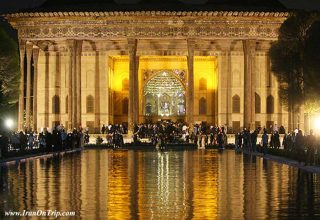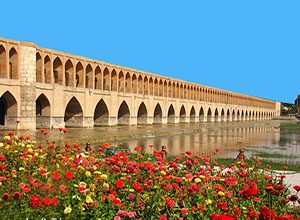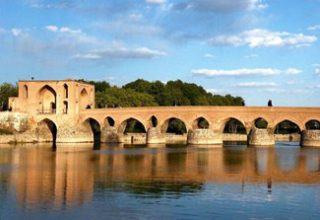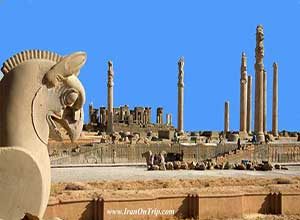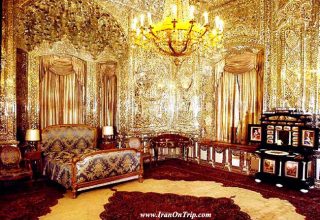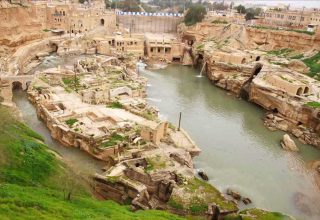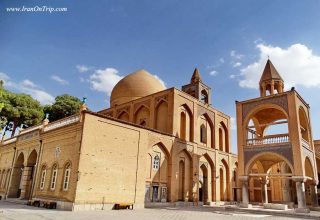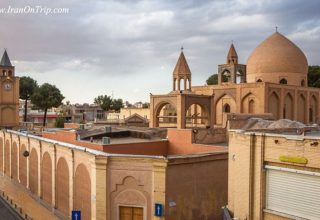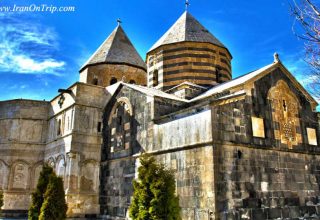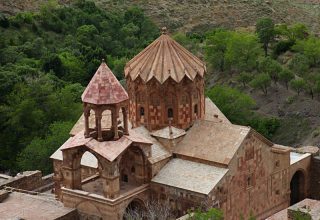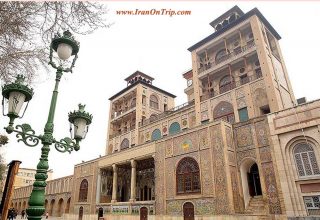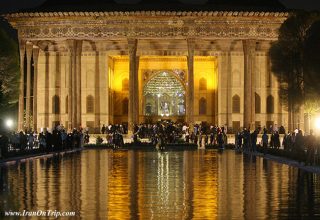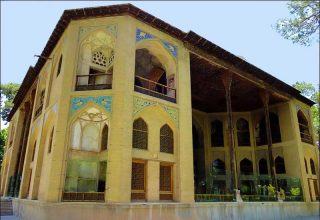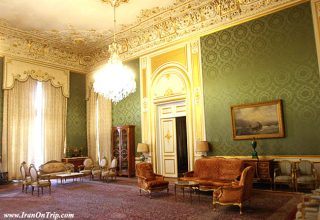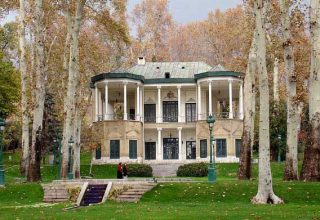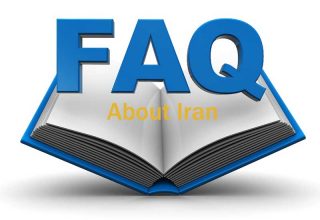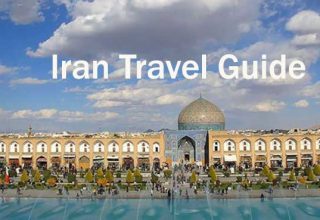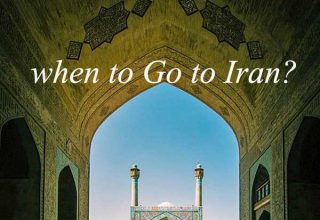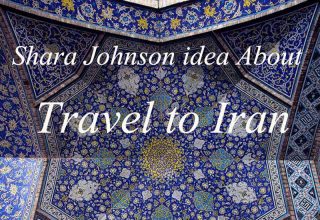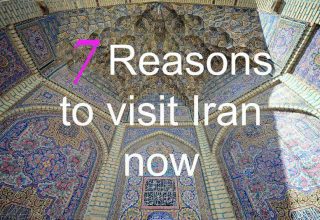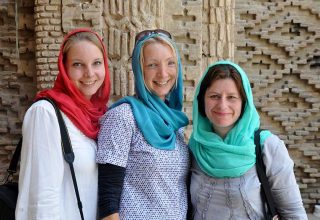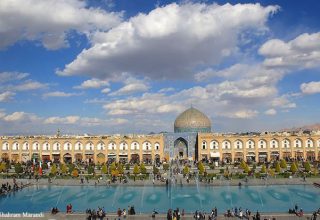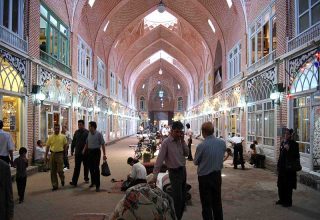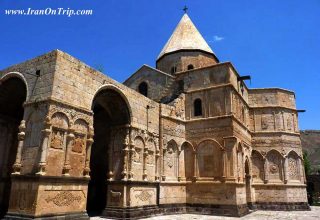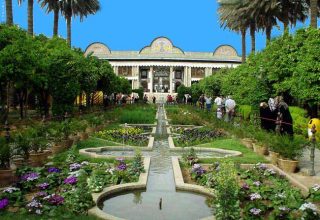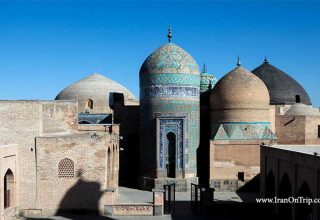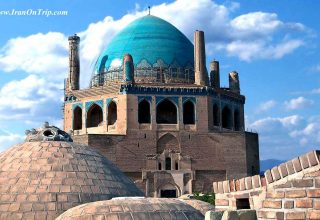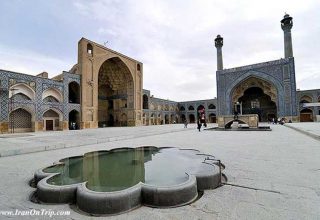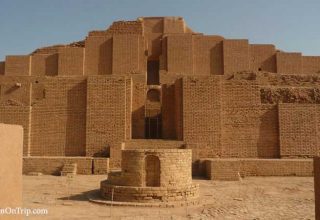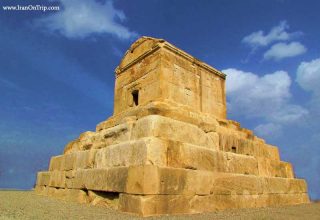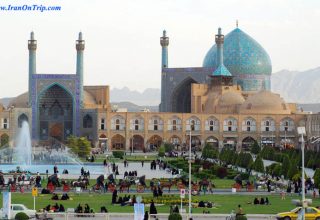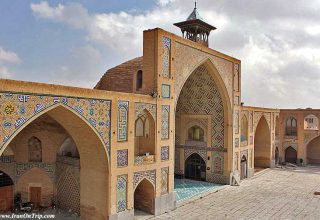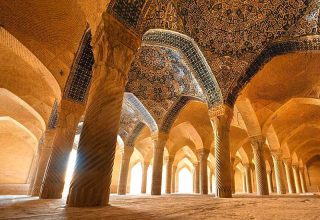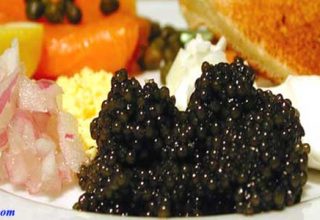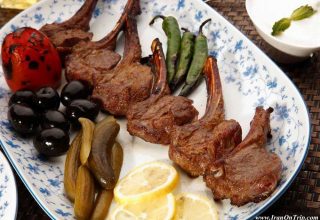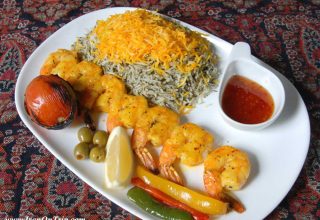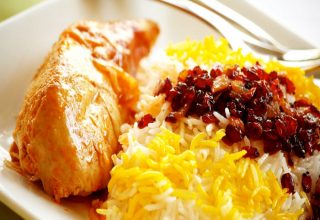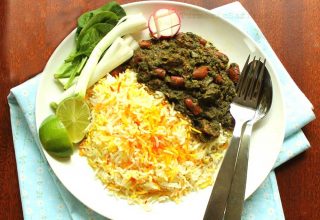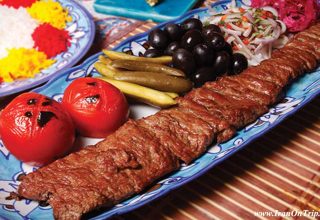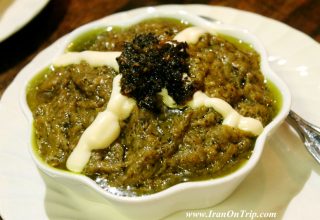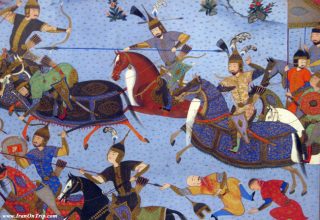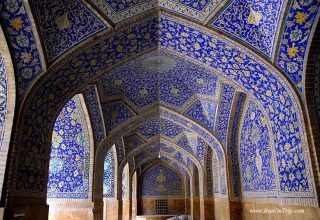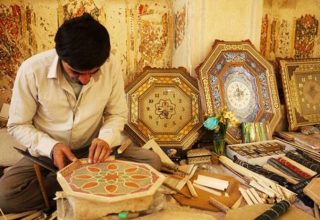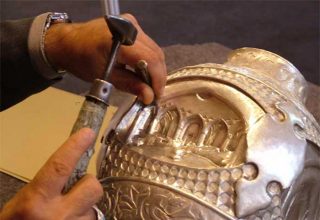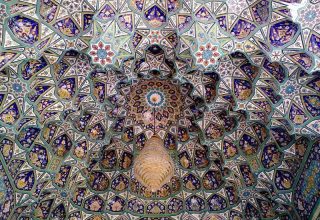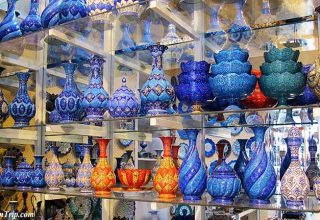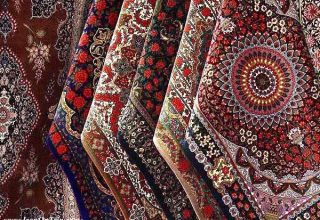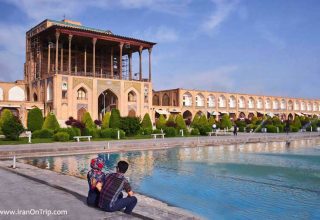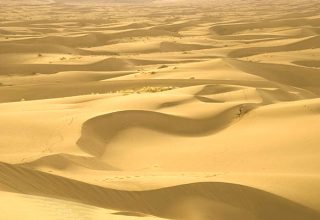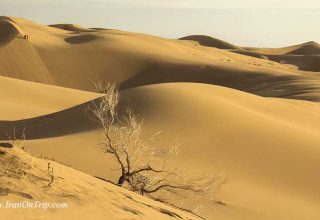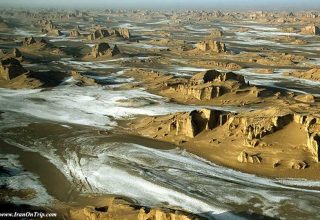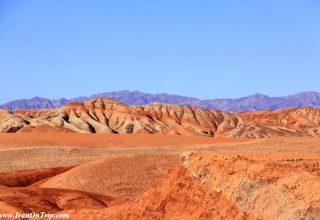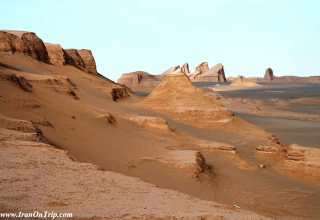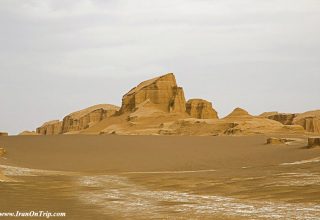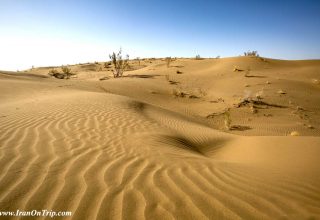
Located in Esfahan (a city of Esfahan province)
This palace was also called ‘Daulat Khaneh-e-Mobarakeh Nagsh-e-Jahan’ and the ‘Daulat Khaneh Palace’. Its unique archaic architecture is related to the Safavid era. This edifice was constructed under the orders of Shah Abbas I. The monarch would receive special envoys in this palace and hold his audience here. Valuable miniature paintings, the works of the reputed artist of the times Reza Abbassi, and other traditional works of art can be noted here.Plasterwork of the ‘sound room’ was modeled such that the acoustic affect produced natural and pleasant sounds. The sovereign and his guests would be spectators to polo, illuminations, fire-works and the dramatics that took place in the Nagsh-e-Jahan Square from the halls of this elegant palace.

Aali Qapu is a wonderful Safavid palace in Isfahan, Iran.
Aali Qapu (Turko-Persian word for Imperial Gate) is a grand palace in Isfahan, Iran. It is located on the western side of the Naqsh-e Jahan Square opposite to Sheikh lotfollah mosque, and had been originally designed as a vast portal.
The impressive entranceway was no doubt intended to symbolize the strength and authority of the Safavid monarchs. It is forty-eight meters high and there are seven floors, each accessible by a difficult spiral staircase. In the sixth floor, music room, deep circular niches are found in the walls, having not only aesthetic value, but also acoustic.
The name Aali Qapu, from Arabic Aali, “Imperial or Great”, and Turkic Qapu meaning “gate”, was given to this place as it was right at the entrance to the Safavid palaces which stretched from the Naqsh-e Jahan Square to the Chahār Bāgh Boulevard.
The building, another wonderful Safavid edifice, was built by decree of Shah Abbas the Great in the early seventeenth century. It was here that the great monarch used to entertain noble visitors, and foreign ambassadors. Shah Abbas, here for the first time celebrated the Nowruz (New Year’s Day) of 1006 AH / 1597 C.E.
The talar or verandah formed an ideal place from which to watch the games of polo which took place in the square and is richly decorated with designs painted on the external plaster at the rear and elaborate tracery in the ceiling.
The columns, like those of Chehel Sotoon, were originally encased in mirrored glass to give the impression of a roof floating in the air, and like them are cut from single chenar trees (Platanus orientalis).
The vast and majestic square of Naqsh-e-Jahan in Isfahan, dating back to the Safavid Dynasty (1491-1722), is embelished with a magnificent ensemble of buildings: the Mosque of Sheikh Lotfollah, the Imam Mosque (formerly: The Royal Mosque), and the Palace of Aali Qapu. The great square was, under the Safavid monarchs, the scene of maneuvers, processions and games especially polo. It is surrounded by twolevel arcades.
The Mosque of Sheikh Lotfollah, the Imam Mosque, and the Palace of Aali Qapu stand gloriously on the east, south, and west sides respectively. At the north end of the square is the royal carvansarai and the bazaar.
With Shah Abbas I (1589-1627) the great period of Safavid architecture started. Under his auspices, Aali Qapu, originally a Seljuq-Timurid pavilion, was considerly enlarged and perfected and became the seat of government, chancellery of State Administration, and a place for ceremonial events.
Like the Ottoman Empire under Suleyman I, the Safavids under Abbas, sometimes known as Abbas the Great, reached their height during his reign. His task at the beginning of his reign was to rejuvenate the ailing Safavid Empire, which had fallen nearly to the point of collapse since the death of Tahmasp in 1576. Qizilbash revolts were paralyzing the military, and the Ottomans and Uzbeks had taken advantage of that fact to occupy Tabriz and Herat, respectively, as well as much territory surrounding those cities. Respect for and loyalty to the shah had also dropped under the inept rule of Ismail II and Muhammad, and Abbas thus had the formidable task ahead of him of turning the empire around and reasserting its power in the Islamic world.
He turned his attention to military matters first, in an effort to reconquer the lands the Safavids had recently lost. In order to focus his resources on a war with the Uzbeks, Abbas concluded a humiliating peace treaty with the Ottomans in 1590. After a long war in the east, the Uzbek khan died in 1598, and in the ensuing chaos the Safavids were able to reconquer Herat and stabilize the eastern frontier. Abbas then turned against the Ottomans and retook Tabriz in 1605. In 1623, he reclaimed Baghdad after a century of Ottoman rule, and by his death in 1629, the Safavid Empire had returned to the borders first established for it by Ismail I.
Abbas also concluded new agreements with foreign powers concerning trade. By the time of his ascension to the throne, the Portuguese had established bases on the islands of Hurmuz and Bahrain, in the Persian Gulf, which diverted trade from the traditional overland routes across Persia to Portuguese-controlled sea routes through the Indian Ocean network. Although the English occasionally traded through Persia and Russia to avoid passing through the Ottoman Empire, the Persian economy was weakened by the general loss of trade. With the establishment of the English East India Company in 1600, however, the Safavids saw a renewal of their lands as a trade route.
The East India Company broke the Portuguese trading monopoly, and by 1616 they had reached an agreement with the Safavids to trade English cloth for Persian silk. In 1622, the English helped Abbas take Hurmuz from the Portuguese, since without a navy, he had been unable to quell the threat they posed to his southern coast any earlier than that. Trading relationships thus drew the Safavids into European affairs, either as a middleman for goods from India, or as an ally against the Ottoman Empire.
Domestically, Abbas also initiated several significant policies. Foremost on his agenda was to find a way to quell the constant Qizilbash fighting and revolts. He did this by establishing a permanent, paid army of his own, made up mainly of prisoners from the Caucasus, to avoid having to rely on Qizilbash military support in every Safavid campaign. The new army could put down Qizilbash revolts when necessary, and it was loyal only to the shah. In order to pay his newtroops, Abbas increased crown land holdings by seizing land from Qizilbash landholders. This action not only added revenue to the royal treasury to pay the new army, but it also took further power from the Qizilbash, which was the original aim of creating a non-Qizilbash army in the first place.
This internal restructuring of the empire caused a major power shift, resulting in the increased centralisation of power in the hands of the shah. In doing so, Abbas essentially ensured the survival of the empire for a century after his death, because despite the series of weak rulers who followed him, the central administration he established was able to continue operating.
In 1598, Abbas moved the Safavid capital to Isfahan from Qazwin, which had itself taken over from Tabriz, on the Ottoman border, 50 years earlier. Isfahan was located in the centre of Persia, and thus it was not as vulnerable to attack as Tabriz or Qazwin. Abbas adorned Isfahan, which had also been the Seljuk capital centuries earlier, with the latest Persian architecture, including the Aali Qapu, or Royal Palace, and the Masjid-e Imam, or Royal Mosque. Under Abbas, Isfahan became one of the world’s greatest cities.
The reign of Shah Abbas the Great represented the height of the Safavid Empire. He was a strong ruler who transformed the empire from near-collapse in 1587 to one of the three Great Islamic Empires by 1600. He involved the Safavids in European trade and diplomacy, and he restructured the army to decrease the number of Qizilbash revolts. At the same time, however, Abbas set the empire up for its decline and eventual collapse at the hands of Afghan invaders a century later. He was an insecure ruler who feared that his ascension to the throne – by deposing his father – would be re-enacted by one of his sons upon him. For that reason, he killed his eldest son in 1615.
He also ceased the practice of giving provincial governorships to Safavid princes, which was customarily done to expose the empire’s heirs to government, in order for them to be prepared when called to govern it themselves. Abbas feared that this practice gave the princes too much power, however, so he ended it, and instead forced the princes to stay in the harem, to be raised by women and eunuchs. This resulted in ill-educated shahs with no governing experience, and the subsequent low quality of rulers contributed to the empire’s decline.
The Safavid Empire was thus a short-lived one, particularly when compared to the long-lived Ottoman Empire. But during its relatively short existence, and particularly during the first century of it, the Safavid Empire established itself as one of Islam’s greatest dynasties. Perhaps most significant among its achievements was the widespread conversion of the Persian people to Shi’ism, and thus for the development of the Persian nationalism that remains strong today in Iran.
Aali Qapu Architecture
Aali Qapu is rich in naturalistic wall paintings by Reza Abbassi, the court painter of Shah Abbas I, and his pupils. There are floral, animal, and bird motifs. The highly ornamented doors and windows of the palace have almost all been pillaged at times of social anarchy.
Only one window on the third floor has escaped the ravages of time. Aali Qapuwas repaired and restored substantially during the reign of Shah Sultan Hussein, the last Safavid ruler, but fell into a dreadful state of dilapidation again during the short reign of invading Afghans. Under the Qajar Nasir al-Din shah’s reign (1848–96), the Safavid cornices and floral tiles above the portal were replaced by tiles bearing inscriptions.
Shah Abbas II was enthusiastic about the embellishment and perfection of Aali Qapu. His chief contribution was given to the magnificent hall, the constructures on the third floor. The 18 columns of the hall are covered with mirrors and its ceiling is decorated with great paintings.
The chancellery was stationed on the first floor. On the sixth, the royal reception and banquets were held. The largest rooms are found on this floor. The stucco decoration of the banquet hall abounds in motif of various vessels and cups. The sixth floor was popularly called (the music room).
Here various ensembles performed music and sang songs. From the upper galleries, the Safavid ruler watched polo, maneuvers and the horse-racing opposite the square of Naqsh-i-Jahan.
The Aali Qapu building was built in several stages, beginning from a building with a single gate, with entrance to the government building complex, and gradually developed, ending in the existing shape. The period of the development, with intervals, lasted approximately 70 years.
Aali Qapu Stages
First Stage: The initial building, acting as entrance to the complex, was cubical and in two stories, with dimensions measuring 20 x 19 meters and rising to 13 meters.Second Stage: The foundation of the cubical upper hall, built on the entrance vestibule over the initial cubic shape structure, was also in two stories.Third Stage: The fifth story, using skylight for the central room, emphasized the vertical extension.
Fourth Stage: The eastern verandah or pavilion, advancing towards the square and supported by the tower shaped building, was built. The entrance vestibule was extended along the main gate along with a passage to the market perpendicular to the eastern flank of the building.
Fifth Stage: The wooden ceiling of the verandah, supported by 18 wooden columns, was built, in addition to the stairway in the southern flank known as the Royal Stairway.Sixth Stage: During this stage, a water tower was built in the northern flank for supplying water to the copper pool of the columned verandah. Plaster decorations were created in the music hall.
The room on the sixth floor is also decorated with plasterwork, representing pots and vessels. It is well worth visiting the decorations around the room, which represent a considerable artistic feat.These decorations were not placed there to act as cupboards: the stuccowork is most delicate and falls to pieces at the highest touch. Hence, it was placed in these rooms for the purpose of ornamentation.
Compiled By: Firouzeh Mirrazavi


